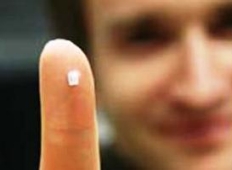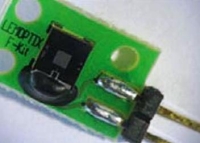April 26, 2011 — Lemoptix, a company involved in development, microfabrication and industrialization of micro-electro-mechanical systems (MEMS) scanning micromirrors, has developed micromirrors with actuation based on magnetic and heat-dissipating principles instead of gearings. The company combined mechanical and electrical design technology for MEMS scanning mirrors, magnetic actuation optimization and mirror optical properties.
 |
The Lemoptix laser scanning micromirrors feature:
- Extremely large optical scanning angle above 40° in static (step by step, DC) mirrors;
- Large optical scanning angle above 70° in resonant mirrors;
- Integrated mirror position sensor, to sense the mirror position at any time (patented);
- Ultra-precise MEMS driving and sensing electronics;
- Voltage below 5V;
- Power consumption down to μW;
- >2.5 x 2.5mm reflective surface;
- High shock resistance;
- No hysteresis behavior
- Insensitivity to electrostatic discharge (ESD) and radiation.
Lemoptix micromirrors, made of single-crystal silicon, demonstrate robustness and long-term stability. The surface reflectivity is enhanced by a thin coating of metal material. The highly flexible fabrication process means that a large variety of materials can be coated, thereby catering to light sources of different wavelengths.
Lemoptix LSCAN laser scanning micromirrors are integrated into optical spectrometers, laser range finders and microscopes. Lemoptix’ resonant and static scanning micromirrors are designed to rotate and deflect light and can be used in a myriad of optical applications due to the unique combination of performance and size.
 |
Applications include 3D measurement/scanning, barcode scanners, endoscopy/confocal microscopy, optical spectrometers, medical imaging, etc.
Lemoptix has developed efficient tools to achieve rapid prototyping of MEMS from design to fabrication. Lemoptix uses advanced analytical and finite element modeling (FEM) tools to do the complete MEMS design.
MEMS mirror actuation does not use gearing effects or any other mechanical contact-based effects. It uses an innovative fatigue-free magnetic actuation: an electric current flowing on the mirror itself, under a magnetic field, induces mechanical displacement.
MEMS mirrors are designed to be actuated at their mechanical resonant frequency. The maximum intrinsic silicon material gain is used to obtain the widest possible scanning angle at an ultra-low power consumption level.
Static actuation MEMS mirrors are designed to be actuated in static operation, meaning that the mirror is titled and the position is held stable. It is here that the expertise of Lemoptix really comes to the fore by achieving a best in class optical scanning angle of more than 40° coupled with low power consumption and input voltage. The scanning angle being highly linear to the applied signal level.
For more information, visit http://www.merictech.com/micromirrors.htm
Also read: Microvision’s MEMS scanning mirror proves shock-resistant
Follow Small Times on Twitter.com by clicking www.twitter.com/smalltimes. Or join our Facebook group

